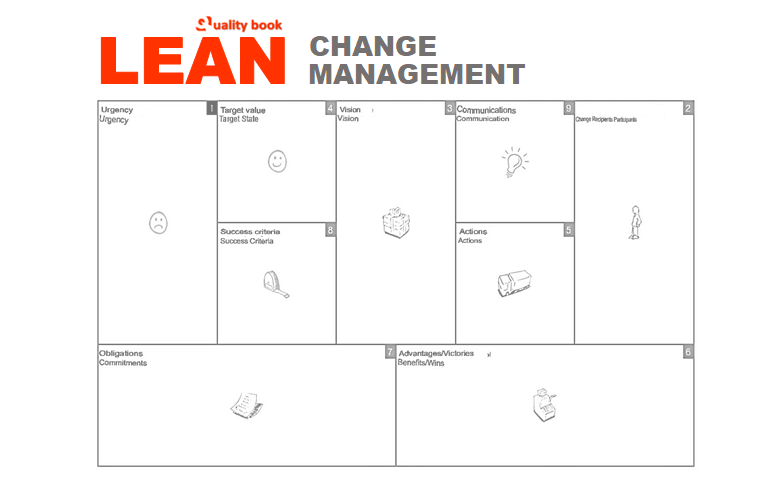Lean change management includes lean change canvas and iterative cycles for effective changes for organizational improvements.
Since the beginning of the New Year, we love to plan for change. We write and compile lists, glue stickers with changes and improvements in work, in sports training and, sometimes, in everyday life and family environment. But, you see, often everything that is planned on paper remains unitized. We are faced with resistance from colleagues, with the wrong course of change – with a bunch of reasons that nullify our efforts.
How can we learn to act in a planned and deliberate manner, to be cautious and cautious, and to bring the planned changes to implementation? How to involve colleagues in working with changes and make the project environment transparent?
Are there any interesting and simple tools for this?
That’s what my little post is about. About lean change management
If we start talking about Change, and especially about Organizational Change, John Cotter’s “Eight Steps of Lean change management ” model immediately comes to mind. According to the author’s model, we plan in advance and then follow a certain sequence of actions to carry out changes (very similar to waterfall for projects). And the better the plan for improvements “on the shore” is worked out, the more likely the success of the project.
However, despite the great fame, blindly following a sequence of eight of these steps is unlikely to lead to success. We live in a complex, unpredictable world. Organization is a complex “confusing” system (see Cynefin framework), and any changes are almost impossible to carry out according to a pre-approved plan. Especially if we are talking about organizational transformations.
Managing change as a startup Last year, I came across an interesting book by Jeff Anderson, “The Lean Change Method”. The Lean change management approach is based on an idea based on the Lean Startup methodology, well described in the book by Eric Rice and tested by many for launching products/business applications.
Lean Change Canvas
Jeff suggests borrowing the approach and launching improvements within the organization as “organizational startups.” And, accordingly, each such startup will be built on hypotheses, tests and go through a certain cycle:
- Run the experiment.
- Measurement & Evaluation.
- Teaching
Lean Change Canvas Following further by analogy, the author proposes to start working with the construction of Lean Change Canvas.
A visual display of the desired changes. It’s a simple tool for organizing work and engaging the change team in a project (a similar tool is described in Ash Maurya’s book “Running Lean: Iterate from Plan A to a Plan That Works”).
How Lean Change Canvas is built?
In Jeff’s book, you can find a detailed description of the campaign. Here is a brief summary:

Every change must begin with the problem it aims to solve (Urgency).
The changes will affect one or more employees in the organization, so the next step is Change Participant.
The participants and the identified problems determine the Vision of Change.
With the help of the vision, we set the desired Target Options.
The next step, in order to achieve the desired state, we need to determine a set of Actions that we must implement trainings with Scrum masters, coaching sessions, etc. (Activities).
The participants in the changes assume the Obligations that they must adhere to.
Benefits – each change should carry a specific set of benefits.
In order to understand that our initiative has achieved results, we set Success Criteria (metrics) by which we will track the process of implementing changes (Success Criteria).
And completing the construction of the Lean Canvas, we define the channels of Communication between the participants (Communication).
The Model
It’s simple – our Model of Change is ready. Let’s supplement the resulting Model with two more tools for launching, evaluating, and adapting:
Minimum Viable Changes (by analogy with Minimum Viable Products – a strategy for rapid product development) – we do not plan all Improvements at once, we make a set of minimal hypotheses and test them with experiments.
Use the Kanban board to plan and manage the flow of experiments (work in progress)
The value of any tool is in the ability to be useful in practice. We have already tested the Lean Change Canvas approach at strategic sessions with our clients.
What happened:
- We quickly check the correctness of the selected changes, that they are aimed at solving specific problems, and discard unnecessary ones.
- We involve the change team in the discussion.
- We visualize all the necessary information around, which increases transparency and trust between participants.
Now it’s your turn!